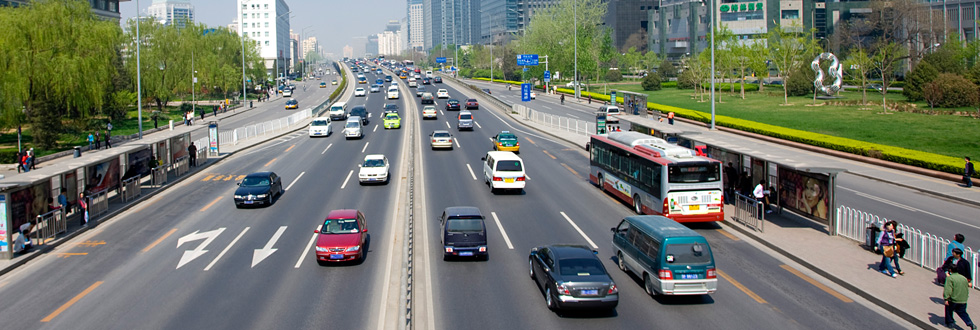INTELLIGENT TRAFFIC SYSTEMS
Cameras are an “intelligent eye” for ITS (Intelligent Traffic Systems), they have to provide high quality images
in every weather condition for automated detection and recognition. With the rise of Automatic Number Plate
Recognition (ANPR), also known as LPR (License Plate Recognition), machine vision had become a cornerstone of
modern traffic systems.
As mentioned above, the main traffic applications for machine vision systems are ANPR and traffic
monitoring.
ANPR is a versatile technology that is used in many different traffic applications, such as access
control systems, law enforcement, tolling or in-vehicle applications for example in police cars. In tolling
systems machine vision camera-based ANPR is also capable of replacing transponder technologies, like RFID or
DSRC for vehicle identification.
Traffic monitoring systems are most frequently tasked with monitoring traffic flows, detecting
accidents, to ensure rapid reaction by the authorities and synchronized switching of traffic lights to promote a
smooth traffic flow. Machine vision techniques are typically used for identification, detection, vehicle
counting and categorization. The data can be combined with the results of a weighing system to determine the
consumed raw materials and fill level, allowing for clear, fully automated identification of individual trucks
or even railroad cars and tanks.
Camera systems can also be used in street and rail inspection systems to help with timely initiation of
maintenance and repair measures. With image processing, cracks and holes or other defects can be detected
automated with high speed in street surface and rail inspection applications.
For many projects, the infrastructure pre-determines the camera type.
Cameras for ITS applications:
- for access control an IP camera is needed, due to its easy integration into existing security systems
- for tolling systems and traffic monitoring, an industrial camera is the common choice, mostly because its
real time compatibility, and with the proper sensor, they offer the necessary sensitivity to capture high
quality images during short exposure times
- in-vehicle applications usually need a USB 3.0 camera for easy connection to car’s computer systems and
board-level cameras for highly integrated solutions
- road or rail inspection needs line-scan cameras, so images can be recorded line-by-line, allowing vehicles
recording during peak densities and in some cases with high speed
If you have a project in the traffic and transposrtation industry that needs a machine vision camera or special
digital industrial camera, please come to us with your
questions, we will gladly help you to identify the core parameters, and help you to choose from hundreds of
possible cameras and accessories to get the optimal solution for your problem!
To download a success story on machine vision camera integration for automated traffic violation monitoring,
please click here.
